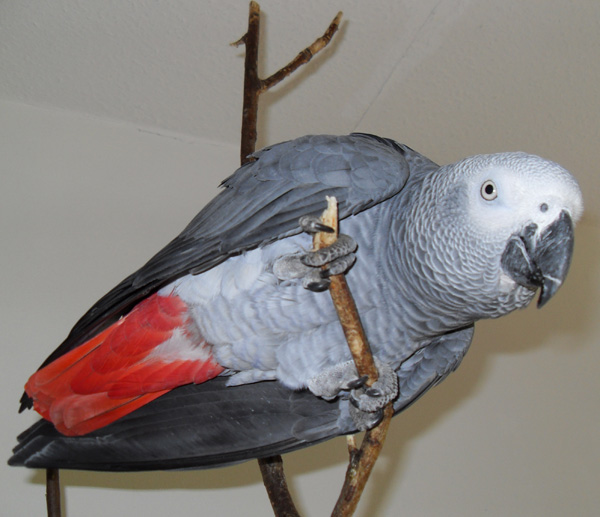- In Parrots Blog
Papaya: ‘Fruit of the Angels’
 By Pauline James
By Pauline James
Papaya is a sweet and luscious fruit from the tropics that is full of goodness and has many powerful health benefits – even Christopher Columbus famously called it the ‘Fruit of the Angels’.
There are two main types. Hawaiian and Mexican, but those seen in our local supermarkets, all year round, are the Hawaiian variety; the Mexican version grows to 10x the size. The flesh of the papaya is a rich orange colour with yellow or pink hues and its round black seeds encased in a gelatinous-like substance are also edible – their spicy flavour being somewhat reminiscent of black pepper.
The fruit, and other parts of the papaya tree, contain papain, an enzyme that helps digest proteins. This enzyme is especially concentrated in the fruit when it is unripe and is extracted to make digestive enzyme dietary supplements. But, this enzyme can also be greatly beneficial to young parrot chicks being hand-reared.
If the flesh of the papaya is liquidised with a little pre-boiled water, it can work brilliantly, fed little and often, to aid in the break-down of stubborn foods in a compacted crop. Many a young chick has been saved having been fed papaya and if hand-rearing tiny chicks, the inclusion of a small amount of this pureed fruit in its formula can act as a powerful preventative, as well as a cure, to crop and digestive disorders.
This fruit is also rich in vitamins C, A, E and K, folate, potassium, calcium, magnesium and fibre and is low in calories. And, although only found in small quantities, it also provides four times the amount of Omega-3 fatty acids to Omega-6 fatty acids, making it an extremely healthy food.
Papaya also contains high levels of powerful antioxidants, and the riper the fruit the more it contains, which helps prevent cholesterol building up in blood vessel walls. High levels of fibre also helps to maintain lower cholesterol levels and the folic acid they contain converts homocysteine, which can damage blood vessel walls, into benign amino acids also helping to prevent heart disease.
Papaya’s unique protein-digesting enzymes including papain and chymopapain also help to lower inflammation and heal burns. In addition, the antioxidant nutrients found in this fruit, including vitamin C, vitamin D, and beta-carotene, also help reduce inflammation, support the respiratory and immune systems and provide relief from arthritis.


 By Oliver Fry
By Oliver Fry